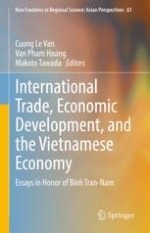This volume spotlights some of the most important economic issues confronting today's emerging developing countries. The topics studied in the book include the importance of productivity to economic growth, international trade and its relationship to productivity; immigration and brain drain; pollution havens, climate change, and the carbon tax; the effectiveness of foreign aid, the efficiency of education, and governance. Written by some of the most respected scholars in their respective fields, the individual chapters apply both economic theory and the most current empirical tools in rigorous but accessible exposition. Researchers can find value in the modeling and empirical techniques that can be applied to other countries and datasets. Policy makers can benefit from the intellectual foundation on which decisions on important issues can be based; and students of international trade, economic development, and environmental economics can gain knowledge of different country settings that give context to their fields of study.
